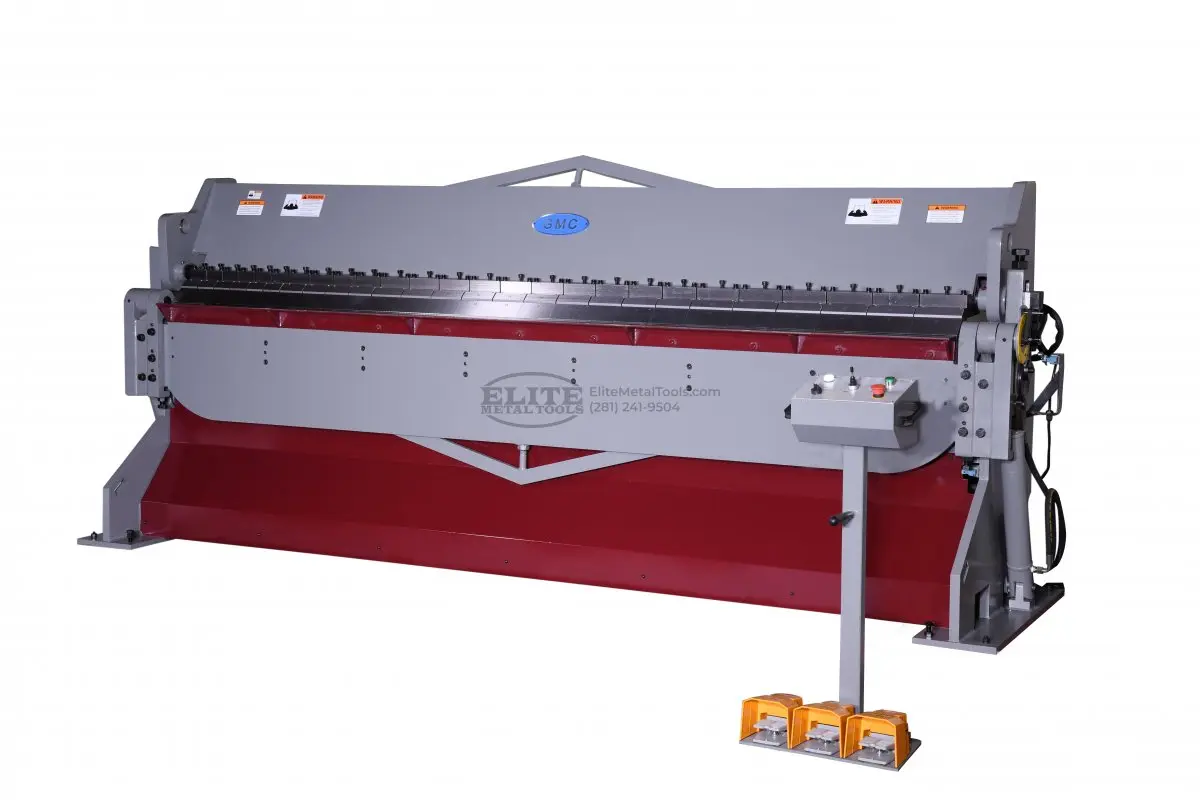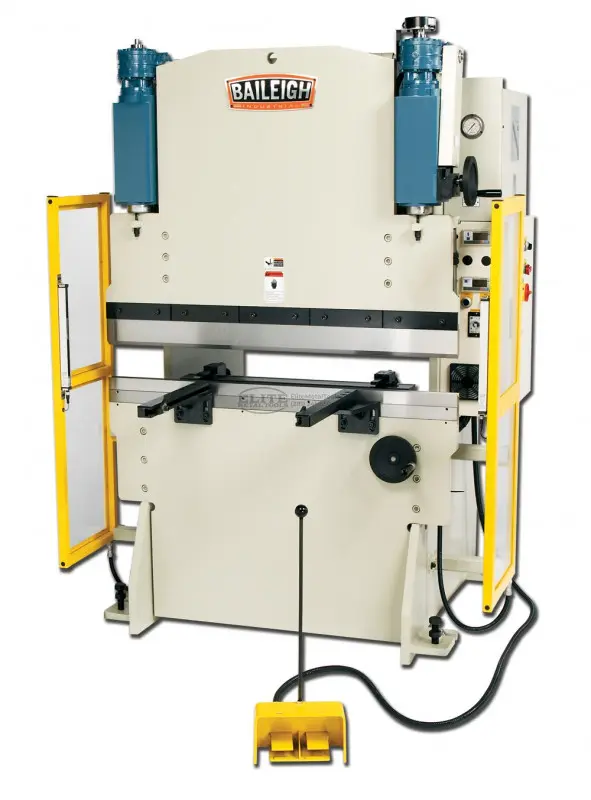Elite Metal Tools Articles
Industry news, tips, and updates on all things Elite Metal Tools
Hydraulic Press Brake - Let's Learn About
The Lets Learn About Series is an exercise in which we try to anticipate the most common questions as they relate to the purchase of machinery and accompany them with the answers. If you have a question that you think would be a good fit for this series please email insidesales@elitemetaltools.com.
Hydraulic Press Brakes: A Comprehensive Guide to Types, History, and Top Brands
The History of Hydraulic Press Brakes
Hydraulic press brakes have a rich history that traces back to the early 20th century when there was a growing need for more efficient and versatile bending machines. The development of hydraulic systems and advancements in hydraulics led to the birth of hydraulic press brakes as we know them today. Prior to this, mechanical press brakes were commonly used, but they had limitations in terms of precision and flexibility. The introduction of hydraulic systems brought significant improvements, allowing for better control, increased power, and enhanced bending capabilities./product/16119
Types and Applications of Hydraulic Press Brakes
Hydraulic press brakes come in various types, each designed to suit specific bending requirements. CNC press brakes, or Computer Numerical Control press brakes, are highly automated machines that offer exceptional precision and repeatability. Tandem press brakes consist of multiple machines working together, allowing for simultaneous bending and improved productivity. Synchronized press brakes utilize hydraulic cylinders to ensure precise and parallel movement of the ram, resulting in uniform bends.
The applications of hydraulic press brakes span across multiple industries. In the automotive sector, they are used for manufacturing body panels and structural components. In aerospace, hydraulic press brakes are instrumental in shaping various aircraft parts. In construction, they aid in the fabrication of structural elements. Metal fabrication industries rely on hydraulic press brakes for bending sheets and plates, creating a wide range of products.
Key Components and Working Principle of Hydraulic Press Brakes
To understand the functionality of hydraulic press brakes, it's important to familiarize ourselves with their key components. The hydraulic system, consisting of a pump, valves, and hydraulic cylinders, provides the necessary force to bend the metal. The control panel allows operators to adjust and monitor the bending parameters. The back gauge assists in positioning the workpiece accurately. The ram, equipped with a die, descends to apply force and shape the material.
The working principle of hydraulic press brakes involves the conversion of hydraulic energy into mechanical energy. When the operator initiates the bending process, the hydraulic pump pressurizes the hydraulic fluid, which is then directed to the hydraulic cylinders. The cylinders extend, pushing the ram downward and causing the die to exert pressure on the workpiece. The force applied bends the material to the desired angle, creating precise and accurate bends.
Advantages of Hydraulic Press Brakes over Mechanical Press Brakes
Hydraulic press brakes offer numerous advantages over their mechanical counterparts, making them a preferred choice in many metalworking applications. One key advantage is precision. The hydraulic system allows for fine control over the bending process, resulting in accurate and repeatable bends. Hydraulic press brakes also offer higher productivity due to their automated features, such as programmable back gauges and CNC controls. The versatility of hydraulic press brakes enables the bending of various materials, thicknesses, and profiles. Additionally, they are energy-efficient, with hydraulic systems utilizing power only when needed, reducing overall energy consumption. Finally, hydraulic press brakes are designed for ease of use, with intuitive controls and ergonomic features that enhance operator efficiency and safety./product/312
Maintenance and Safety Tips for Hydraulic Press Brakes
Proper maintenance is crucial to ensure the longevity and optimal performance of hydraulic press brakes. Regular inspections of hydraulic components and fluid levels are necessary to identify any potential issues or leaks. Lubrication of moving parts, such as guide rails and cylinders, should be performed according to the manufacturer's recommendations. Additionally, it's essential to keep the hydraulic system clean from debris and contaminants that can affect its performance.
Safety is paramount when operating hydraulic press brakes. Operators should receive thorough training on the equipment and follow proper safety protocols. This includes wearing appropriate personal protective equipment (PPE) like gloves and safety glasses. It's important to understand the machine's operating manual, including emergency stop procedures and the safe use of controls. Regular inspections of safety features such as guards, interlocks, and emergency stops should be conducted to ensure they are in proper working order.
Top Brands of Hydraulic Press Brakes
In the market for hydraulic press brakes, several brands have established a reputation for their quality, innovation, and customer satisfaction. Let's take a closer look at three top brands: US Industrial, Baileigh, and Beten Bender.
- US Industrial: US Industrial is known for manufacturing robust hydraulic press brakes that deliver precision and performance. Their machines are built with high-quality materials and advanced features, ensuring durability and accuracy in bending operations. US Industrial press brakes offer a range of models to accommodate various bending capacities and requirements, making them suitable for diverse industries.
- Baileigh: Baileigh is a renowned brand that offers a wide selection of hydraulic press brakes. Their machines are designed with user-friendly features, including easy-to-use controls and quick tooling changes. Baileigh press brakes incorporate advanced technology and innovative design to provide superior bending accuracy and efficiency. Their commitment to customer satisfaction is reflected in their reliable products and excellent after-sales support.
- Beten Bender: Beten Bender specializes in hydraulic press brakes that are engineered for precision and versatility. Their machines are equipped with advanced CNC controls, allowing for seamless operation and precise programming of bending parameters. Beten Bender press brakes are known for their robust construction, ensuring stability and consistent performance even under heavy loads. They offer a range of models to cater to different bending requirements.
Summary:
Hydraulic press brakes have transformed the metalworking industry with their precision, versatility, and efficiency in bending operations. In this comprehensive guide, we explored the history of hydraulic press brakes, the different types available, their key components and working principle, as well as their advantages over mechanical press brakes. We also discussed crucial maintenance tips and safety guidelines to ensure safe and reliable operation. Additionally, we introduced three top brands, US Industrial, Baileigh, and Beten Bender, known for their excellence in manufacturing hydraulic press brakes. By understanding the fundamentals and advancements of hydraulic press brakes, professionals and enthusiasts can make informed decisions when it comes to metal fabrication and bending processes.

